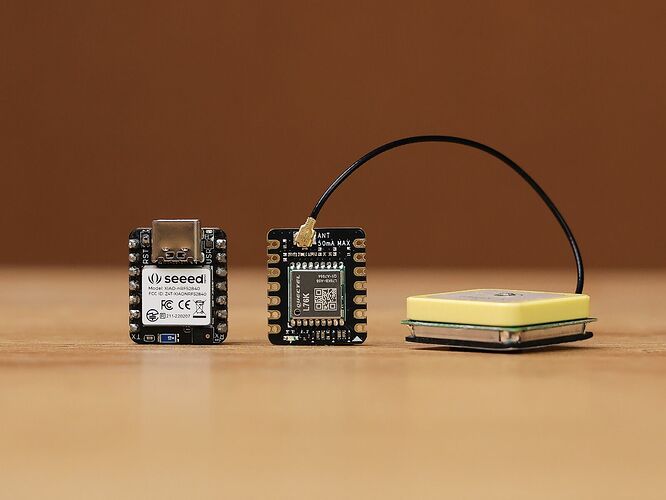Yes a large and heavy ceramic plate antenna helps the GPS reception, but it does not really make for a ‘mini’ GPS tracker.
With such a board, how would you actually receive the tracker location ?
Is that a XIAO with header pins pre-souldered or are they just teasing me?
Looks like the GPS is designed to be soldered to the back of the XIAO.
There are some details on the power consumption of GPSs here;
And how the type of antenna affects fix times here;
Note from the above that even a simple bit of wire, light and compact, can work quite well on the Quectel GPSs.
Power consumption of that GPS (Quectel L76) will be in the order of 15-25mA whilst aquireing a fix, typically 45 seconds, and it may settle down to 10-15mA after a couple of minutes.
For a lot of tracker applications then the GPS is normally run in ‘hot fix’ mode, after it gets a fix its powered down or put into standby and as long as there is a voltage on the battery backup pin the GPS maintains the satellite empherisis data it has downloaded and when powered back up will aquire a fix in 5 seconds or so and you can then power down again.
The L76 shown has a software backup current of 500uA and down to 7uA if you can power it down via a MOSFET etc. The L76 (allegadly) has a mode whereby it adapts to how its being moved around, when moving in a car say, it uses more power to maintain fix accuracy and can reduce power when its stationary or moving slowly. Quectel claim the power consumption can fall to 2.6mA.
1 Like
Just seen this in the datasheet for the GPS;
Standby current OK, but that active antenna must be consuming a fair bit of current …
1 Like
![]() Finally!!
Finally!!![]()
![]()
![]() PJ
PJ ![]()

